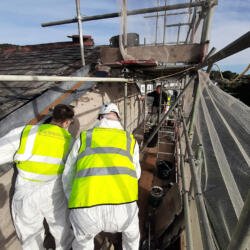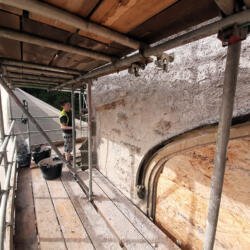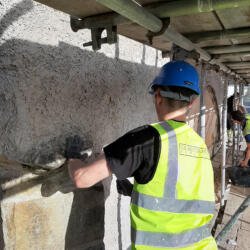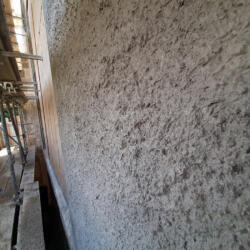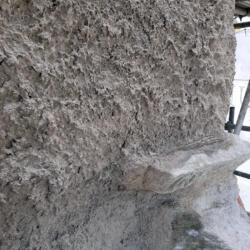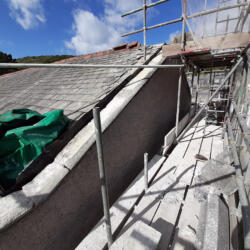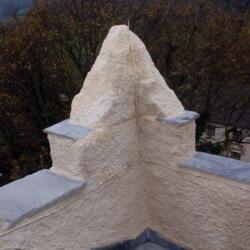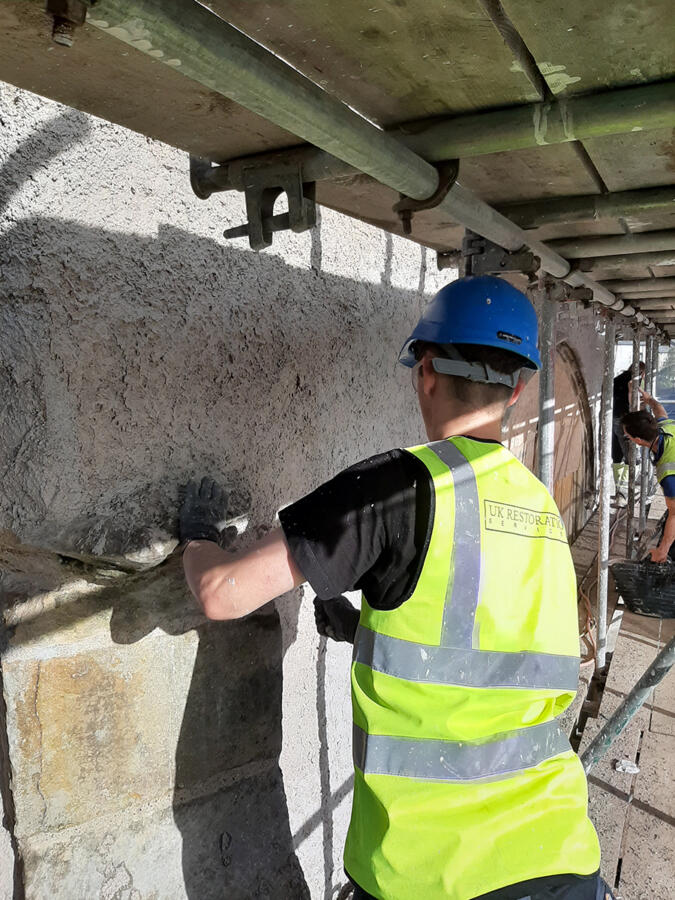 Traditional lime harling is a rough-cast wall finish comprising lime and aggregate, notable for its rough texture. It is often found on historic buildings such as churches and castles to protect the exterior stonework and prevent water ingress. Lime harling can also known as roughcast or wet dash, depending on the region. Like other forms of lime render, harling provides both a weather protective and decorative coating.
Traditional lime harling is a rough-cast wall finish comprising lime and aggregate, notable for its rough texture. It is often found on historic buildings such as churches and castles to protect the exterior stonework and prevent water ingress. Lime harling can also known as roughcast or wet dash, depending on the region. Like other forms of lime render, harling provides both a weather protective and decorative coating.
The term “harling” takes its name from the action of hurling wet mortar at a wall. This method is still the preferred way to apply harling, however, modern technology allows for machine-spray application.
Some traditional lime harling has survived for over a century on many of our traditional and historic buildings. However throughout the 20th Century a lot of lime harling was replaced with modern cement and other impervious coatings. The intention was to create a longer lasting and more durable finish. These relatively modern materials are often incompatible with stone masonry constructions. This leads to failure of the materials, allowing water ingress into the building. Water ingress can then cause further damage to the original stone work and create structural instability.
Like many traditional building materials, lime harling and other forms of lime-based renders and coatings are vapour permeable and can help to manage the effects of moisture in mass masonry walls. Traditional lime harling will reduce rainwater penetration into masonry and help to promote evaporation from the underlying wall fabric.
Traditionally, a lime wash is applied to the harling coat once it has set. Lime wash acts as a natural paint coating to provide additional weather protection. Natural pigments can be added to the lime wash to give a wide variety of colours and finishes.
UK Restoration Services are members of the Building limes forum, an organisation that aims to research and promote the use of lime based mortars, such as traditional lime harling. We also work directly with local conservation officers to reinstate lime harling on historical buildings as part of restoration projects.
In 2017 our team applied a lime harling finish to the clock tower at St. Oswalds Church in Grasmere and more recently to a grade II listed church in Warton, Lancaster.
